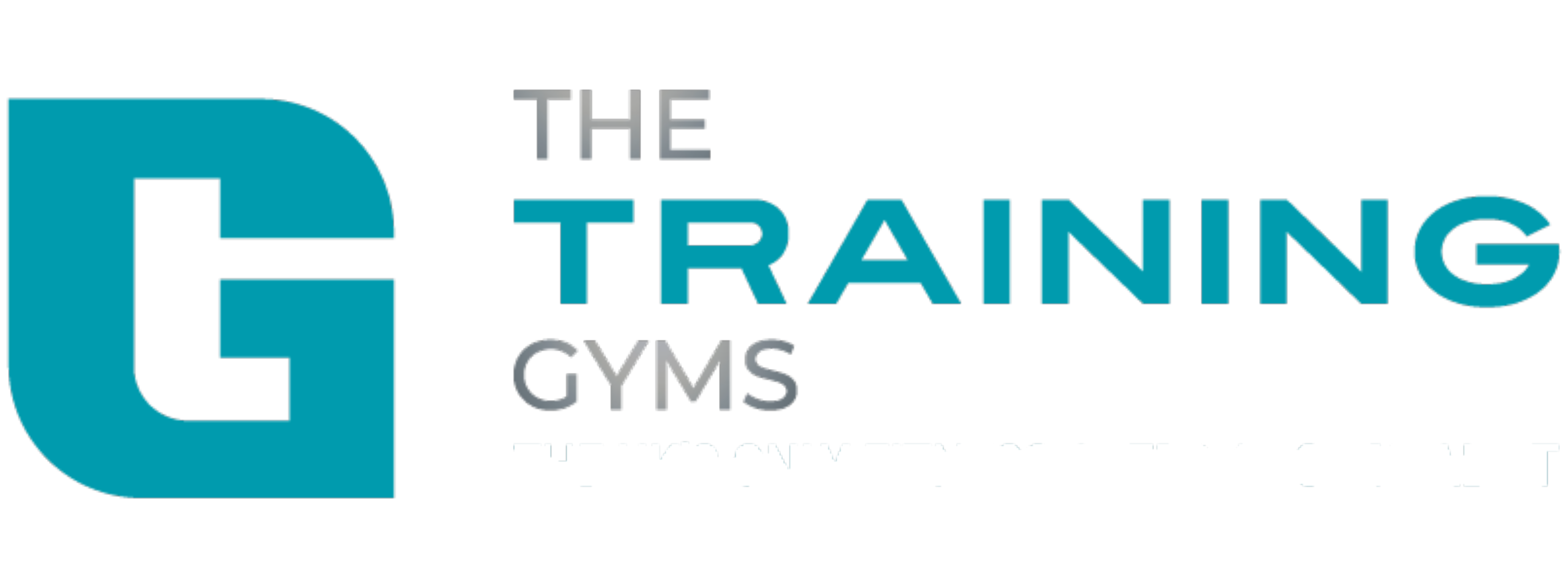Mark: Hi, this is Mark from the DoubleVision Conditioning Centre, and today I’m going to interview Steven, another one of the founders, with myself. Basically, one of Steven’s main roles is designing and improving the DVCC program, so what I wanted to do is ask him, in more detail, about each one of the processes that the DVCC has.
So today we’re going to be talking about the progress tracker, which is a weekly or tri-weekly appointment that the clients have with the client experience manager, basically where they can keep them on track. I’m going to go into a bit more detail; first things first, Stephen, why did you create the progress tracker?Stephen: I was looking for a way to keep people accountable but mainly to actually make the results that they feel that people have been talking to them about – people often say my friends at work were saying how much weight I’ve lost or how I look so good – my dress is feeling too big or I’ve gone down a couple of notches on my belt size.
It’s a way to make that progress that is intangible, they feel it but they don’t necessarily believe it’s there, into reality. So, in the progress tracker, we use our rather expensive body fat machine, that can analyse body composition: the amount of muscle tone you have, the amount of fat you have and different things like that, to make the progress that someone knows, or feels, they’re actually having or someone else has told them they are having, is real.
So it gives hard numbers and shows the amount of fat that has been lost, the amount of muscle that has been gained, etc. and gives it a nice tangible result. What we have actually linked to that very recently is that it will show, straight away on a graph, someone’s results, so that you can literally see as you’re going along, and track the progress you’re making.
One of the key parts to this is that we are tracking that you’re losing fat or weight in a healthy way; we’re not interested in trying to lose total weight as fast as possible, e.g. like Lighter life or different Cambridge diets, etc – we are looking to lose fat; so basically changing someone’s body composition for the healthy way.
One of the DVCC’s true core mission statements is that we will only try to help people to lose fat to become healthier; we’re not interested in trying to lose as much weight as much as possible, which can result in someone being less healthy.
Mark: I will expand a little bit on what Steven was saying; actually this week (you might be listening to this in the future) launches another DVCC app that allows clients to be able to check their progress. Obviously we don’t want them checking every day, but it allows them to see, in a graph format, the fat they have lost, the muscle tone they have increased and all of their results in a simple, easy app, so they can see their progress and not get into what is called the gap, where they forget where they have come.
Often people might be eight months down the line, you’ve lost 40 lbs but in the last 2 weeks you’ve not lost any weight and you might have even have put on a pound, and you can soon forget that you’ve lost 39 lbs previously; this app and our graphs allow clients to really see their progress.
Stephen: Yes, because that has been the case and we have realised over the years that the human condition is very clever at forgetting all the progress they’ve made and remembering, like Mark says - having not lost body fat for a week or so – and only looking at the very short term.
So, by doing the progress tracker, we’re constantly reminding clients of the progress that they have made, and also it can be something of a trouble shooter as well, if there’s ever anything that needs to be changed or any advice or information that can be given at this point, then that’s what all the team spend a lot of time working with – to be able to provide.
Mark: Obviously, the name speaks for itself, so we don’t need to have any more explanation on why it’s called the progress tracker; but what research, or experience, went into the creation of the progress tracker?
Stephen: As we touched on at the beginning, it’s really designed for once a week, or ideally every three weeks, because legitimately you can’t see that much progress in a week with someone’s body composition; but equally, if someone feels they want to be held accountable in that way, then once a week is fine; but on the whole, most people find that every three weeks is optimal for them.
But, like I said, it’s a lot of actual realisation over a large number of years that people do like to see their progress because they’re very good at convincing themselves that they haven’t made progress, despite some hard facts, like not being able to address being far too big now or having to be four notches down on a belt. But also sometimes the changes; and this certainly happens at the beginning of someone’s transformation, that when they first start exercising, often they build some lean muscle tissue, because they have often been undernourished, they haven’t been eating the correct foods and they haven’t been exercising.
So as soon as they start exercising properly, then maybe they will build up a little bit of lean muscle tissue and their total weight might not change very much; sometimes it can actually even go up. But what’s happening in the body, is quite massive; they’ll be losing a lot of body fat and, if you don’t show this in the progress tracker, using a very special machine that tracks the amount of fat loss, then it is very easy for someone to get discouraged and that was actually where the whole progress tracker idea came and where we started investing a lot of money in these machines, for every centre that we have, so that we are able to show – in real time, real life – how much fat has actually been lost, because there is a lot of body fat that people don’t even realise they have and don’t realise that they are losing; this is called visceral body fat, which surrounds your heart, lungs and all your different vital organs.
This is actually the most dangerous type of fat, most disease causing and obviously linked to a lot of illnesses. That’s the one that, by doing this progress tracker, you actually know that you are losing that as well.
Mark: What, specifically, does the progress tracker involve?
Stephen: It involves a 1 to 1 meeting with one of the team, mainly the client experience manager, but everyone is trained to the same high standards. You will be put on to the special body fat machine, which is non invasive so you don’t have to take your clothes off and get naked! And there are no callipers or measuring or anything like that so it is very non-intrusive. You will be put on that for about 30 seconds and that’s going to give a whole reading out.
We will then put your details into a new app on the iPad, which will then straight away show you in real time in a graph format, exactly the progress you are making; the amount of muscle tone you have increased, the amount of body fat you have lost and the amount of fat mass you have lost as well. That allows you to really see the progress you are making.
Mark: From there, we have actually developed another process, where you are asked a series of questions and then our system will actually enable the transformation expert or the client experience manager to tell you what you need to be focusing on, if you are not losing the body fat at the specific rate that we feel you should be.
It will give you simple work that is easy for you to follow and easy for you to implement in the following 1-3 weeks, which will have you losing the weight. So it is all a specific process; it is process driven, not down to the individual, because we have spent a lot of time and money finding the best and most effective ways to help people lose body fat; therefore, we want to ensure that each one of our clients gets that very same high standard and, therefore, results.
Stephen: Because within fat loss, not everything is created equal; so we have created this algorithm – I didn’t create it but I applied the information and someone else created it – to make sure that you are focusing on the biggest bang for your buck, change, habit or adjustment you can make to your lifestyle.
So, rather than trying to do everything, you are focusing on the most important thing for you right now, so that will create the change and then that will create the momentum.
Mark: How does this fit into the ‘Real You’ transformation process?
Stephen: It’s a vital part and it forms kind of the cornerstone, so that you know the progress you are making, you can have anything troubleshooted if you ever find that you’re not making progress, and you will find there are going to be times in your journey where you don’t lose body fat, because it’s not linear – you don’t just go down in a straight line.
Often when we have plotted people on the graphs, you can see that it doesn’t go that way. You will suddenly see spurts of progress and then maybe it will level off; sometimes it even goes back up a little bit; and then another spurt of progress, despite your best efforts. It is just that your body will not play ball and not just adapt exactly how you want it; it’s used to being a certain way and it takes some time – and some inclination by it – to actually start changing, so this forms a cornerstone to track your progress and to show you the amount of progress you have made – and really to provide you with confidence, knowing that you are making that progress and also to provide you with confidence that there is someone there, keeping you accountable the whole time.
Mark: What results does this get, or the Real You transformation process, get?
Stephen: I think the transformation photos and testimonials that are dotted around are probably testament, but the amount of fat loss and body composition change has been quite enormous over the last few years, as we have started adapting and refining this whole process, we have found that people have lost – I’m just trying to think of some real world examples – but I know Jan, who has just lost an enormous amount of body fat, for her to get back into her wedding dress for her 20 year anniversary, and she got into the same dress that she wore on her wedding day, which is lovely.
I think the best way to answer that question is to look at the before and after photos around the site.
Mark: If you would like to get involved, if this sounds like it would answer your problems or issues, then if you’re listening to this in iTunes, simply go to www.TheDVCC.com and you will be given directions there; or if you are reading this, at the bottom of this article you will see that you can either download a price guide or you can book in for our “web special”, depending if you have done this before; if you simply click on that link, it will allow you to book in for an appointment with one of our team of transformation experts, and be able to get you on the way to achieving some of these results!
Thanks for listening; this is Mark and Steve, from www.TheDVCC.com







